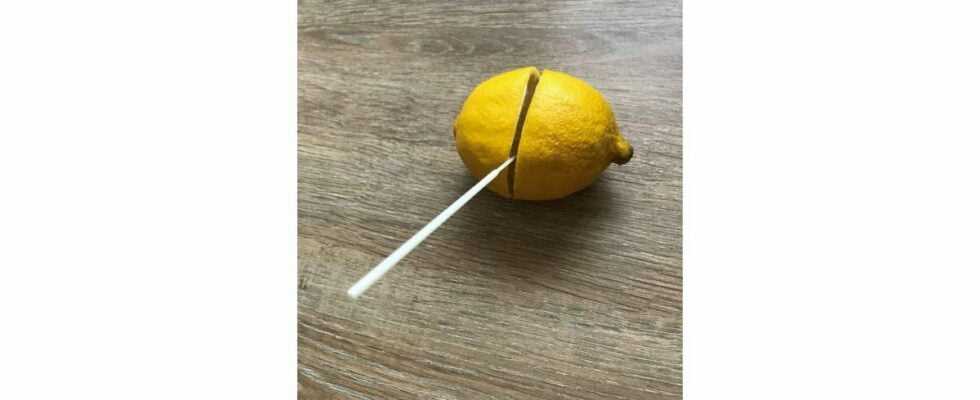The #Fakecovidtest hashtag is spinning on social media. Videos have gone viral in recent months, some have even been viewed millions of times: they show teenagers using lemon, coke, orange juice, kiwi or even ketchup to make self-tests (falsely) positive for Covid-19.
“On TikTok, we even see people passing by who try with perfume or compote”, explains Manon, a young Parisian woman, to France Inter. In short, anything acidic (citric acid from orange juice, phosphoric acid from Coke…). “The acidity may have a link”, indeed confirms on the radio Lionel Barrand, president of the union of medical biologists. According to him, the result of these false Covid tests may nevertheless vary depending on the supplier.
Clearly stated objective: skip class and stay in quarantine…
The thickness of the bars makes the difference
But does it really work? We did the test. We first try with three drops of lemon placed directly on the self-test. Result: four bars actually appear at the level of the C and the T, as seen in the photo below. But they are very thin, which can be seen as a positive with parents who have never used them before. For the Coke deposited in the self-test, two bars appear more clearly.
Because those who have already used it know it: the bars must appear thick and red for a test to be positive for Covid-19. We now try by diluting lemon in the liquid provided in the self-test (called extraction buffer), where the swab inserted in the nose is theoretically mixed. The result is clear: a very red bar, as it should, appears at the level of C but not at the level of T: the test is therefore negative.
In the same way, we try with developer product mixed with ketchup and the result then appears very negative.
In conclusion, when a test is really positive and not distorted, two very red bars must appear, as explained in the video below.
As a reminder, here is how to use a self-test, and here are the results
The phenomenon of fake tests actually comes from the UK: British schoolchildren made this discovery this summer to be able to skip class, reports The Guardian.
With liquid: negative, without liquid: positive
In The Conversation (in English), Mark Lorch, professor of science communication and chemistry at the University of Hull (UK) also did the test: with Coke, his test showed two bars (like us), but with Coke mixed with the liquid provided in the self-test, it turned out to be negative.
The scientist explains it this way: “The acidic side gives these drinks a pH between 2.5 and 4. These are quite difficult conditions for the antibodies to work. Maintaining an ideal pH for antibodies is essential to the proper functioning of the test, and this is the role of the liquid solution with which you mix your sample, supplied with the test. »
Thus, without the diluent solution, the test antibodies are fully exposed to the acidic pH of the beverages.
Mark Lorch suggests covering the self-test with the supplied liquid to restore the correct pH. After this process, the “positive” line of a false test disappears, revealing the negative result. We tested: our positive line does not disappear completely but fades visibly after long minutes. Regarding our positive/lemon test, the four bars disappeared after four hours.
How do the interior self-tests work?
In this article, he further explains how the self-tests work from inside: “If you open a self-test, you find a strip of paper-like material and a small red pad, hidden under the plastic casing, below the line T. On the red pad are absorbed antibodies that bind to the Covid-19 virus. They are also attached to gold nanoparticles (tiny gold particles actually appear red), allowing us to see where the antibodies are on the device.”
Finally, according to social networks, other young people would even be ready to buy positive tests to stay at home.
If, in the majority of cases, the positive result of a self-test is not authentic because it must be confirmed by an official antigen test or PCR carried out within 24 hours, in the case of schools, no confirmation in pharmacy is requested… leaving the way “free” for teenagers to deceive their parents, who will be, after reading this article, more vigilant…
